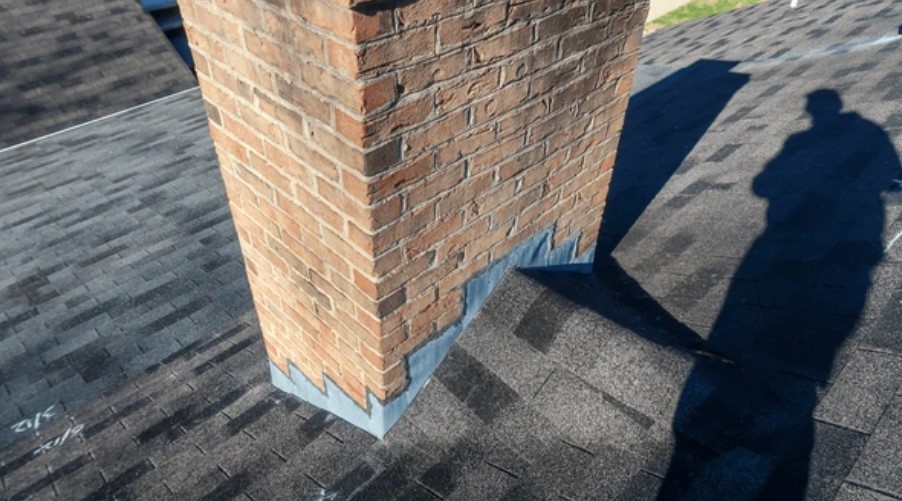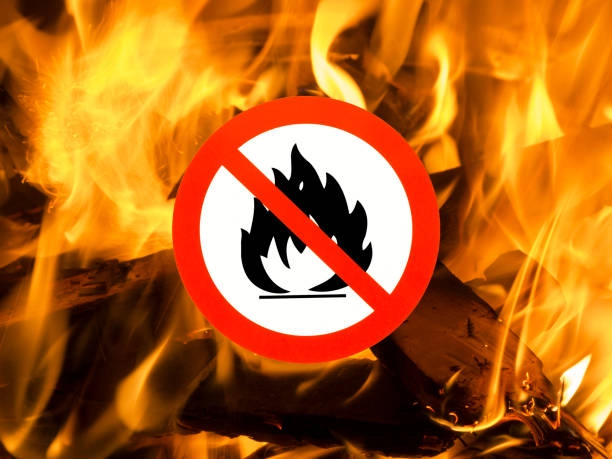Water and chimneys don’t mix. In fact, if you’ve ever spotted a mysterious leak near your fireplace or noticed a water stain creeping down your ceiling, chances are your chimney flashing is trying to tell you something—probably not in words, but in the language of drips and drywall damage.
At Reliant Chimney Sweeps, we’ve seen it all, from barely-there flashing jobs to DIY caulk band-aids that never stood a chance. So let’s break it down: what chimney flashing is, why it fails, and how to get it fixed before your roof turns into a waterfall.
First Things First: What Is Chimney Flashing?
Flashing is the metal (or sometimes rubber) barrier that seals the seam between your chimney and your roof. It’s essentially your chimney’s raincoat. Installed correctly, it prevents water from sneaking into your home where the chimney meets the roofline, a notoriously tricky and leak-prone intersection.
There are typically a couple of layers of flashing working together here. One piece goes under the shingles (called base flashing), and another wraps around the chimney itself (counter flashing). When everything’s sealed tight, water rolls down your roof like it’s supposed to and stays out of your attic, walls, and living room.
When flashing fails, though? That’s when the indoor swimming pool vibes begin.
Why Chimney Flashing Fails in the First Place
You’d think something as important as flashing would be built to last forever, right? Sadly, no. Flashing is one of the most overlooked and underappreciated parts of your chimney system, until it stops doing its job.
One common cause is poor installation. If your flashing wasn’t fitted snugly around the chimney or secured correctly under the shingles, it leaves gaps for water to slip through. We’ve seen plenty of chimneys with flashing that looks more like an afterthought than a waterproof seal.
Another major culprit? Age and weather. Over time, metal flashing can rust, corrode, or pull away from the chimney due to wind, shifting temperatures, or your home settling. Texas weather may not come with long winters, but it does bring heavy rain, scorching heat, and the occasional hailstorm—each one giving your flashing a new challenge to survive.
Then there’s roof work gone wrong. If a roofer replaces shingles but doesn’t redo the flashing, or damages it during repairs, your chimney can end up with a weak point. It’s kind of like replacing your tires but forgetting to tighten the lug nuts. Sooner or later, something’s gonna give.
How Do You Know If Your Chimney Flashing Is Leaking?
Great question—and one that’s surprisingly tricky. Flashing leaks are often sneaky. The signs don’t always show up right at the chimney; instead, they may appear as water stains on ceilings, peeling paint, musty smells, or damp attic insulation near the chimney.
If you’re lucky, you’ll spot the flashing damage early—maybe some visible rust, loose edges, or cracked sealant. But often, the damage is hidden until water starts making its grand entrance indoors.
One of the clearest signs? Drips during or after a rainstorm, especially near the fireplace or on the ceiling close to the chimney. If that’s happening, it’s time to act fast.
Can You Repair Chimney Flashing Yourself?
If you’re into DIY and YouTube tutorials, you might be tempted to give it a go. But chimney flashing repair isn’t your average weekend project. It involves climbing up on the roof, working around a fragile chimney structure, and understanding how to integrate new flashing into your existing roof system without causing more damage.
Slapping on some sealant or roofing tar may buy you a little time, but it’s rarely a long-term fix. Most leaks return stronger than before, and improperly installed flashing can lead to more extensive repairs and higher costs down the line.
Unless you’re trained in roofing and chimney systems, your best bet is to call in a pro. At Reliant Chimney Sweeps, we can inspect your flashing, identify the exact problem, and make lasting repairs that truly waterproof the area. No guesswork, no recurring leaks, and no risky climbs up a ladder.
When Flashing Needs More Than Just a Patch Job
In some cases, flashing can be resealed or reinforced. But if the metal is rusted, bent, or has pulled away from the chimney completely, it’s usually time for a full replacement. Think of it as replacing a broken umbrella—you could duct tape it for a little while, but it’s not going to keep you dry.
During a flashing replacement, we’ll remove the old materials, assess the underlying roof and masonry, and install a new system that properly overlaps with shingles and chimney bricks. We use weather-resistant materials that can handle Texas conditions, and we do it right the first time.
Don’t Forget the Masonry
Another factor that can affect flashing performance? The chimney structure itself. If your bricks or mortar joints are deteriorating, they may not hold the flashing in place properly. Even the best flashing can fail if it’s attached to crumbling masonry.
That’s why our inspections always include a full look at the chimney’s exterior. If needed, we can repoint mortar, repair bricks, or apply waterproofing to keep the entire system solid and leak-free.
Business Owners: Flashing Leaks Aren’t Just a Homeowner Problem
If you’re a business owner with a commercial property that has a fireplace or chimney, say a café, rental property, or office with a cozy waiting room, don’t overlook chimney flashing. Water damage in a commercial setting can hurt your reputation, your equipment, and your insurance premiums.
We offer reliable chimney inspections and flashing repairs for both residential and commercial properties across Texas. Whether it’s your family room or your front lobby at stake, we’ve got you covered.
Fixing Flashing Fast Is Always Worth It
Chimney flashing may not get the same attention as your fireplace or flue liner, but when it fails, it can cause just as much trouble. The good news? Most flashing issues are fixable, and when you catch them early, you can save yourself from much bigger headaches and repair bills down the road.
Whether you’ve noticed leaks, suspect flashing damage, or just want peace of mind before storm season, Reliant Chimney Sweeps is here to help. We’ll inspect your chimney from top to bottom, handle any flashing fixes with precision, and make sure your home stays dry and protected.
Dealing with chimney leaks? Call us today to schedule your flashing inspection. Let’s stop the drip before it does more damage.




